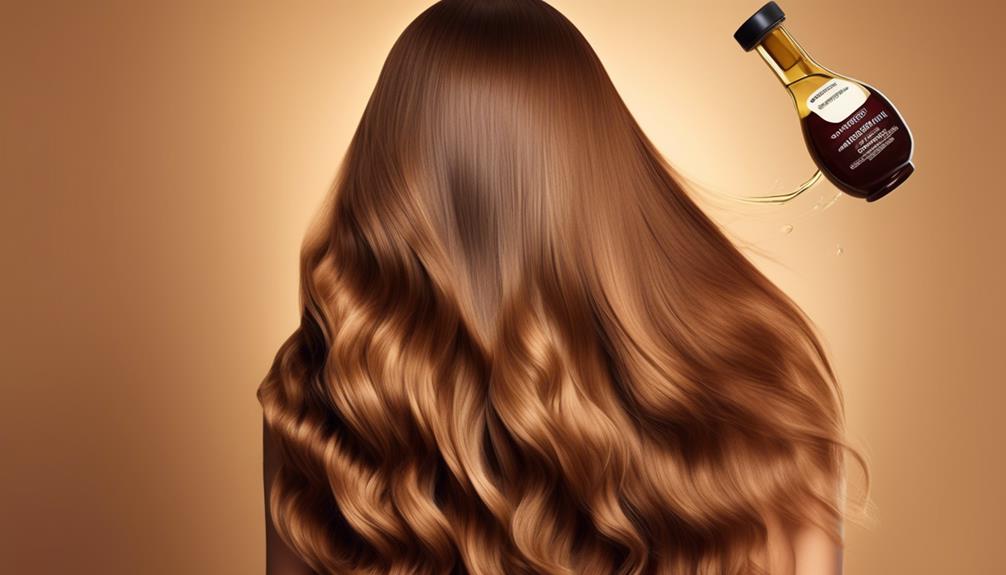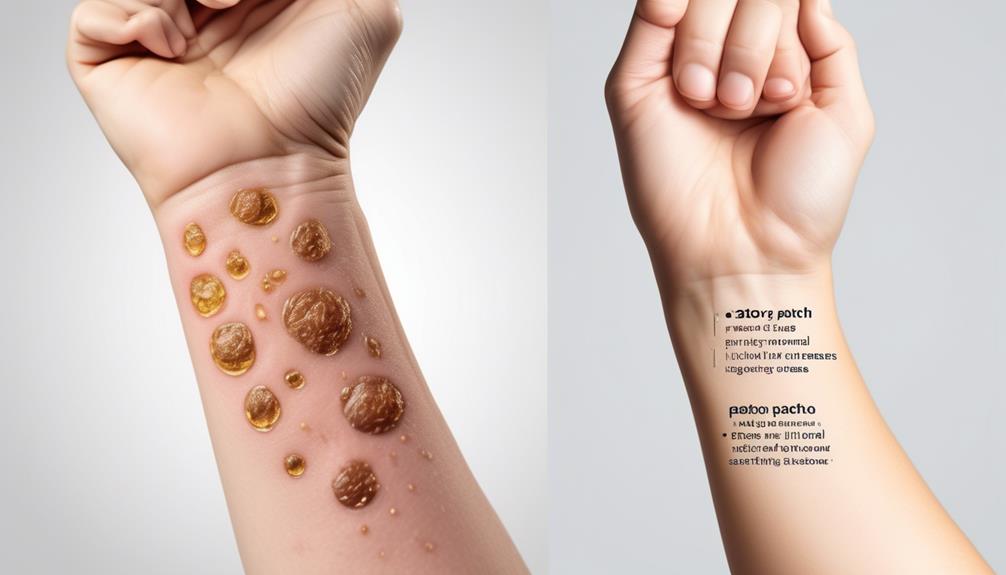Are you on a quest for long, luscious locks? Look no further! Castor oil has become a go-to choice for many individuals in their pursuit of perfect hair. As a dermatologist, I’m frequently asked about the effectiveness of castor oil for hair growth and overall health. While there’s some scientific evidence and plenty of anecdotal support, it’s crucial to dive deeper into this topic and understand how to use this natural oil correctly.
In this article, I’ll reveal the secrets to using castor oil for long, luscious hair, all from a dermatologist’s perspective. So, if you’re eager to find a natural solution to enhance your hair’s health and appearance, keep reading for expert insights and best practices.
When it comes to achieving beautiful hair, many of us have tried countless methods and remedies. But castor oil has emerged as a popular choice, with its potential to nourish and promote hair growth. However, before we delve into the details, let’s understand the science behind this natural wonder.
As a dermatologist, I’ve witnessed firsthand the transformative effects of castor oil on my patients’ hair. But don’t just take my word for it – let me guide you through the proper usage and potential limitations of this magical oil.
Now, imagine waking up to a glorious mane that turns heads wherever you go. Castor oil could be the key to unlocking that dream. But how do you use it effectively? How often should you apply it? Can it work miracles on all hair types? These are the burning questions I aim to answer, along with providing you with real-life examples of success stories.
Gone are the days of complicated hair routines and expensive treatments. By harnessing the power of castor oil, you can achieve the hair of your dreams, without breaking the bank.
Let’s face it – the world of hair care can be overwhelming, with all its technical jargon and complex terminology. But fear not! In this article, I’ll simplify things by using everyday language and synonyms for those tricky terms. I want to make sure that everyone can understand and benefit from the valuable information I’m about to share. After all, having fabulous hair shouldn’t be reserved for experts and industry insiders. It should be accessible to all.
So, get ready to embark on a hair journey like no other. With the guidance of a seasoned dermatologist, you’ll learn the secrets of using castor oil to achieve long, luscious locks. Prepare to be captivated by real-life stories, entertained by a conversational tone, and educated through a storytelling approach. Together, let’s unlock the potential of castor oil and transform your hair into a crowning glory.
Key Takeaways
- Castor oil strengthens and nourishes the hair strands.
- It promotes hair growth by creating a healthier scalp environment.
- Castor oil is best for those with dry or flaky scalps and brittle hair.
- There is no scientific evidence supporting castor oil for preventing or reversing gray hair.
Benefits of Castor Oil for Hair

Castor oil offers a multitude of benefits for hair health and growth due to its rich nutritional composition and unique properties.
When applied to the scalp, castor oil promotes hair growth by creating a healthier environment. The oil contains proteins, vitamins, fatty acids, and antioxidants that nourish and strengthen the hair strands. Additionally, castor oil’s antimicrobial properties help fight off scalp infections, further supporting scalp health.
While it is most effective for those with dry or flaky scalps and brittle hair, it may be too heavy for those with oily hair. Anecdotal evidence also suggests that castor oil can be effective for promoting regrowth of eyelashes and eyebrows.
However, it is important to perform a patch test before applying it to sensitive areas and to use caution and moderation to avoid adverse reactions.
Hair Type Considerations and Application
When considering the application of castor oil for hair, it is important to take into account the specific characteristics of one’s hair type and proceed with caution to achieve optimal results. Here are some tips to help you choose the right castor oil for your hair type and incorporate it into your hair care routine:
- Determine your hair type: Castor oil is best suited for those with dry or flaky scalps and brittle hair. It may be too heavy for those with oily hair.
- Choose the right castor oil: Look for cold-pressed, organic, and hexane-free castor oil to ensure the highest quality and purity.
- Patch test: Before applying castor oil to sensitive areas such as eyebrows and lashes, perform a patch test to check for any allergic reactions.
- Application technique: Apply a small amount of castor oil to the roots of your hair and brush it towards the ends. Leave it in for at least 15 to 20 minutes before shampooing it out. Use it as a weekly treatment.
Application of Castor Oil on Eyebrows and Lashes
The application of castor oil on eyebrows and lashes can potentially promote regrowth and improve their overall appearance. Castor oil contains essential nutrients like proteins, vitamins, and fatty acids, which nourish the hair follicles and stimulate growth. It also has antimicrobial properties that can prevent infections and promote a healthy environment for hair growth. When applying castor oil on eyebrows and lashes, it is important to exercise caution to avoid getting it in the eyes and perform a patch test to check for allergic reactions. Start with a small amount and gradually increase if needed, using it sparingly to avoid overuse. To provide a visual representation, refer to the table below:
| Benefits of Castor Oil for Eyebrows and Lashes |
|---|
| Promotes eyelash growth |
| Prevents eyebrow loss |
| Nourishes hair follicles |
| Provides essential nutrients for hair growth |
Myth About Castor Oil and Gray Hair
To address the common misconception surrounding castor oil’s effectiveness in preventing or reversing gray hair, it is important to understand that there is no scientific evidence supporting its claim. Gray hair occurs when melanocyte stem cells in the hair follicles are depleted, resulting in a lack of pigmentation. While castor oil has shown benefits for promoting hair growth and nourishing the scalp, it cannot restore the natural color of gray hair.
To manage gray hair effectively, it is recommended to focus on managing stress, maintaining a healthy lifestyle, and ensuring proper intake of vitamins D and B12, which contribute to overall hair health. Consulting a dermatologist can provide guidance on effective strategies for managing gray hair.
When it comes to hair loss and scalp infections, castor oil has shown promise due to its antimicrobial properties and ability to create a healthier scalp environment. However, further research is needed to fully understand the efficacy of castor oil in these specific cases.
Patch Test and Cautionary Measures

Before applying castor oil to sensitive areas such as the eyebrows or lashes, it is important to perform a patch test and exercise caution to avoid any potential adverse reactions. Patch testing involves applying a small amount of the oil to a small area of skin and monitoring for any signs of irritation or allergic reactions. This helps determine if an individual has any sensitivity to the oil.
When using castor oil, it is essential to follow appropriate dosage and safety precautions. Overuse or applying too much oil can lead to greasiness and clogged pores. It is recommended to start with a small amount and gradually increase if needed. Additionally, care should be taken to avoid getting the oil in the eyes, as it can cause discomfort and irritation.
To convey a deeper understanding, the following table summarizes the patch test process and safety precautions when using castor oil for eyebrows and lashes:
| Patch Test Steps | Safety Precautions |
|---|---|
| Apply a small amount to a small area of skin | Avoid contact with eyes |
| Monitor for signs of irritation or allergies | Start with a small amount and adjust |
| Wait 24-48 hours for any reaction to occur | Use caution to avoid overuse |
| If no adverse reactions, proceed with use | Discontinue if any adverse reaction |
Enhancing Effectiveness: Warm the Oil Before Application
Warming the castor oil before application can enhance its effectiveness in promoting hair growth and nourishing the scalp. When the oil is warmed, it becomes more easily absorbed by the hair and scalp, allowing its nutrients to penetrate deeply. Here are four steps to apply warm castor oil for maximum effectiveness:
- Heat the oil: Place the desired amount of castor oil in a microwave-safe bowl and heat it for a few seconds until it reaches a warm, comfortable temperature.
- Test the temperature: Before applying the oil to your scalp, test it on the inside of your wrist to ensure it is not too hot. Safety should always be a priority.
- Section your hair: Divide your hair into sections to ensure even distribution of the oil. This will help ensure that every strand gets the nourishment it needs.
- Massage the oil: Using your fingertips, gently massage the warm castor oil into your scalp in circular motions. This will stimulate blood flow and promote hair growth.
Benefits of warming castor oil before application include improved absorption, enhanced nutrient delivery, and increased effectiveness in nourishing the scalp.
Frequently Asked Questions
Can Castor Oil Be Used on All Hair Types?
Castor oil can be used on all hair types, but it is best suited for dry, brittle hair and flaky scalps. Its benefits include strengthening and nourishing hair strands, promoting hair growth, and fighting off scalp infections.
Is It Safe to Use Castor Oil on Sensitive Areas Like the Eyebrows and Lashes?
Castor oil can be safely used on sensitive areas like eyebrows and lashes. Apply a very small amount to induce regrowth, perform a patch test, and use caution to avoid getting it in the eyes.
How Long Should Castor Oil Be Left in the Hair Before Shampooing It Out?
Castor oil should be left in the hair for at least 15 to 20 minutes before shampooing it out. It is recommended to use castor oil as a weekly treatment for long, luscious hair.
Can Castor Oil Help With Hair Loss Caused by Medical Conditions or Hormonal Imbalances?
Castor oil has potential benefits for hair growth and may be effective in certain cases of hair loss caused by medical conditions or hormonal imbalances. However, further scientific research is needed to determine its exact effectiveness in these specific situations.
Are There Any Side Effects or Risks Associated With Using Castor Oil on the Hair and Scalp?
When using castor oil on the hair and scalp, potential allergic reactions should be considered. It is recommended to use castor oil as a weekly treatment and to apply a small amount, leaving it in for 15-20 minutes before shampooing.
Conclusion:Hair
In conclusion, castor oil has gained popularity for its potential benefits in promoting long and luscious hair. With its rich nutritional composition, it is believed to strengthen and nourish hair strands, creating a healthier scalp environment.
However, it is important to consider individual hair types and exercise caution during application. Castor oil has also shown promising results for enhancing the growth of eyebrows and eyelashes.
While anecdotal evidence suggests its effectiveness for preventing or reversing gray hair, further research is needed to support these claims.




